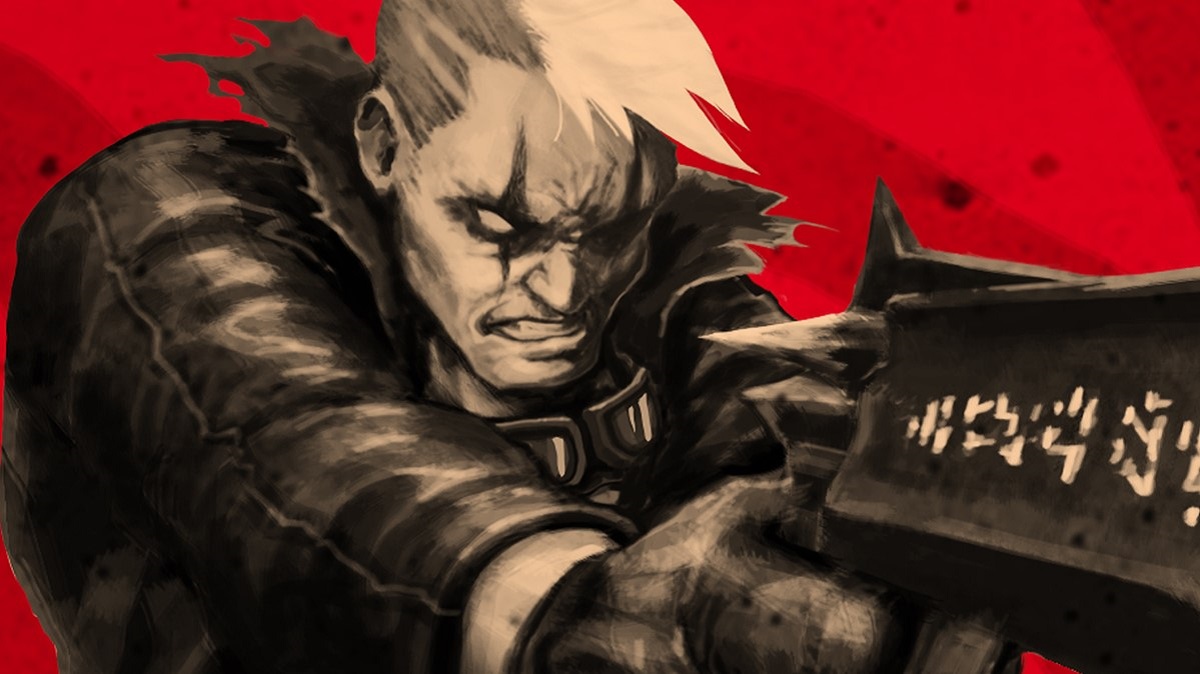They later become the Doom Illuminati
The retro-inspired shooter genre is really in high gear. Following in the wake of the big-budget revival of Doom in 2016 and the indie hot flash of Dusk in 2018, there are now a tonne of indie games vying for recognition in the genre. It’s a bit overwhelming, to be honest. It’s a favorite genre of mine, but it seems hard to separate the wheat from the chaff. My current approach is to just dump milk over all of them and dig in.
Dread Templar is in the bowl. Having entered Early Access back in August 2021, it’s finally time for it to get its 1.0 and get kicked out the door. I wasn’t quite sure what would make it stand out back in its initial test period, and now I’m even less sure.
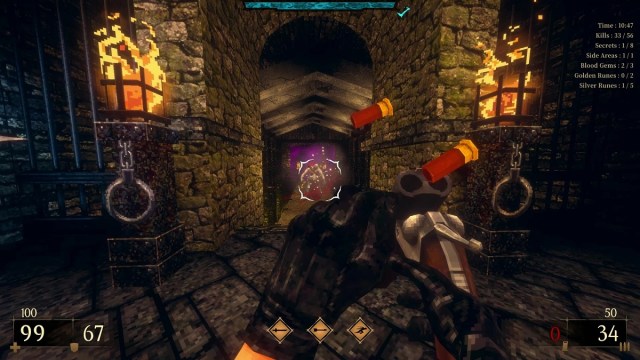
Dread Templar (PC)
Developer: T19 Games
Publisher: Fulqrum Publishing
Released: January 26, 2023
MSRP: $19.99
Dread Templar is the story of the eponymous protagonist, who gains unholy powers to fight the armies of the unholy. Or something. In typical retro-inspired fashion, there isn’t a very prevalent narrative. That’s probably a good thing, since the narrated cutscenes between episodes are kind of better off ignored.
The gameplay is pretty similar to Quake, though the movement and physics remind me more of Turok: Dinosaur Hunter. It’s fast and punchy, featuring a larger arsenal of weapons than your typical pre-3D accelerated shooter. It also doesn’t throw hordes of enemies at you in a way that Doom 2 does, but rather gives you tougher baddies to chew on. That’s kind of disappointing, and really reminds me of the drawbacks that came with moving to polygons.
One place that Dread Templar distinguishes itself from its inspiration is in its upgrade system. You can unlock slots for the upgrades you find in each of your weapon categories, which allow you to expand damage, firing rate, and ammo, as well as some other tweaks. You obtain these upgrades through finding secrets and clearing side areas. The upgrade system is gravy, as is the variety offered by the side areas. The secrets, however, are somewhat maddening.
Rewarded for wall-humping
To be fair, I’m not sure that secret areas were very well handled by most FPS games of the era. A lot of them came down to humping the walls and trying to jam yourself into small spaces. Dread Templar is no different. Sure, some of the walls look suspicious, but it’s easy to convince yourself that all the walls look suspicious. So you wind up grinding yourself against the wallpaper, hoping that some of it will peel off.
At the very least, Dread Templar rewards you for all your wall-humping. The upgrades you collect are a little more interesting than the ammo and health you’d typically come across in Doom or Duke Nukem 3D. However, that also makes it more vexing, since with a press of a button, you get to see how many are still left in a level. That’s maddening because it makes you feel like you can’t leave a level until you’ve licked all the paint off the walls and picked up every little thing. It becomes onerous, and eventually, you’ll just need to compromise and learn to live without them. It’ll eat at you, though.
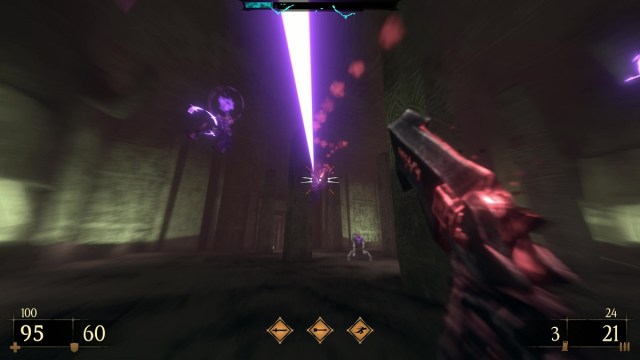
Double-barrel: Check
There are five episodes and 25 levels to Dread Templar, and the levels are rather lengthy. Throughout the episodes, there’s a decent amount of variety, both in terms of visuals and challenges. Most introduce new threats, but unfortunately, some of them seem to be mostly palette swaps.
While some of your foes are completely braindead, charging directly at you in a way that was common for the era, there are others that are much more interestingly designed. My favorite was a monster who shoots up a cloud of smoke when you engage it. It then hides in that cloud, moving about somewhat unpredictably, leaving you to target it based on brief glimpses. Or just fire wildly into the cloud; that can work too.
There are maybe too few enemies for Dread Templar’s lengthy runtime, but the way more gets added throughout helps to alleviate this. There’s also a smattering of bosses spread around for good measure. These are largely just a matter of circle-strafing while dodging as many attacks as you can, but there’s an appreciable grandeur to them.
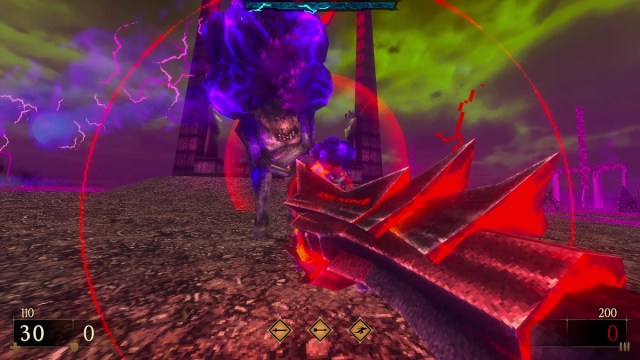
Foreboding clouds
The levels themselves are slightly uneven, but they at least have a variety to them that makes some more memorable than others. They all tend to take place in twisted fantasy places, which I personally feel was a weakness of early-3D shooters. Demons are bad, yeah, but they’re just hanging out in gloomy corridors. They’re much cooler when they’re hanging around an arcade in a movie theatre. But then, isn’t everybody?
There’s also the soundtrack, which starts off as some decent heavy metal, and then just becomes… background music. I’m not the biggest fan of heavy metal, but it works from an aesthetic standpoint in video games. However, while it stood out in the beginning, the later tracks don’t scratch the same itch. They’re far away from being unpleasant, but they don’t feel as integral to the experience.
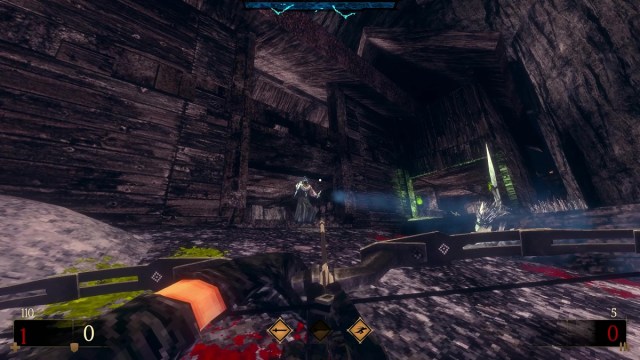
Far away from being unpleasant
Dread Templar could generally be described entirely as “far away from being unpleasant.” From beginning to end, it’s a reasonably well-designed experience, and it never gets to be too much of a slog. It just never really finds a unique identity. There’s no real hook that makes it stand out or will keep you coming back.
Competent is definitely not the worst descriptor a game can attain, but I’d be happier if Dread Templar had found a way to truly distinguish itself. When I find myself with that retro-shooter itch, I can’t see myself coming back to this one. It takes more than good gunplay to make an experience memorable, but there isn’t much more to Dread Templar than that.
[This review is based on a retail build of the game purchased by the reviewer.]


